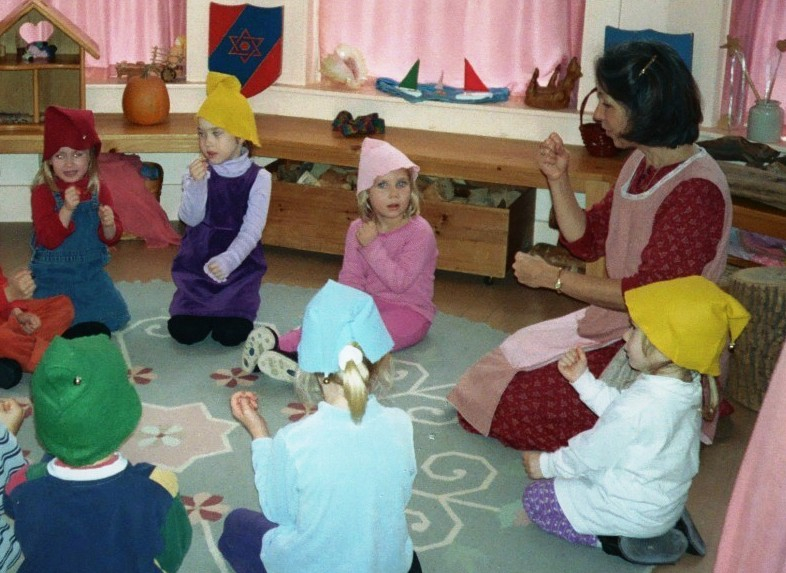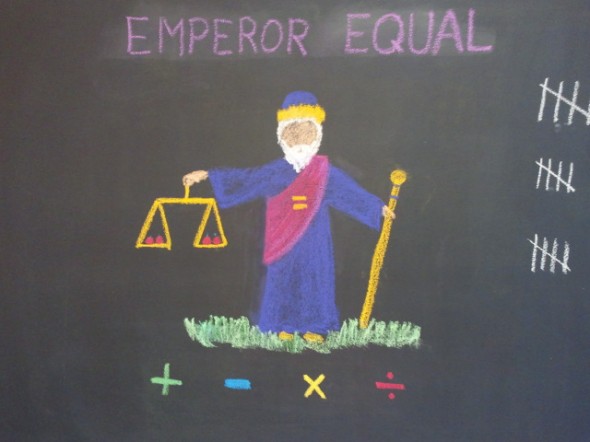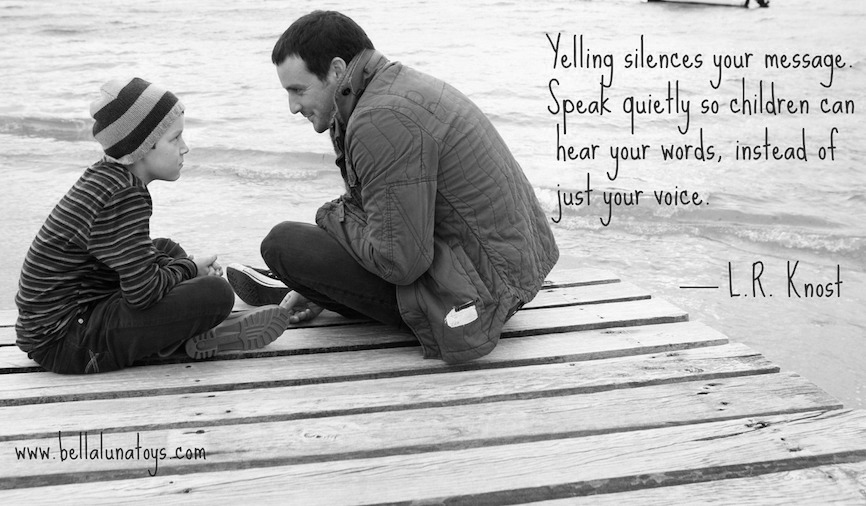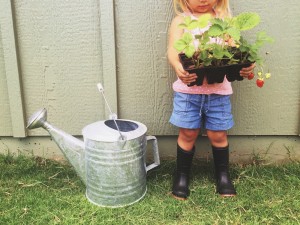From a Parent-Toddler class through the grades, children in a Waldorf school are immersed in stories.
Starting with simple nature stories in the early childhood, children will hear many stories through the years: fairy tales, folk tales, fables, myths, legends, biographies, and stories from history, spoken aloud by the teacher and transmitted heart-to-heart.
In addition, academic subjects throughout the grades−from math to science to history to art to handwork—are all introduced through storytelling.
For example, in a past video blog post on Waldorf watercolor painting, I demonstrated how a kindergarten teacher might introduce painting with a story about “Tippy Brush,” who dips his toes into the water for a foot bath before inviting the other colors to come and play with him.
A first-grade teacher who is introducing the four processes of basic arithmetic may tell an imaginative story about Princess Plus, Duke Division, or Emperor Equal.
Introducing subjects through stories engages children’s imaginations and strengthens their inner picturing capabilities–their ability to create a picture in their “mind’s eye,” an essential skill for creative thinking later in life.








